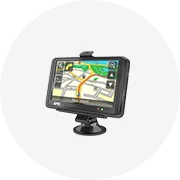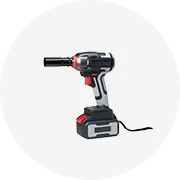Types of Car Window Armrests
A car window armrest is an essential component that provides comfort and support to drivers and passengers during travel. Typically installed on the interior side of a vehicle's door, these armrests often incorporate power window controls and are designed to position the arm in a natural, comfortable position to reduce fatigue during long journeys.
Car Door Armrest
Located on the vehicle's door panel, these armrests are typically padded for comfort and support. Found on both driver's and passengers' sides, door armrests facilitate easy access to window controls, door locks, and side mirror adjustments.
Key benefit: Operational support and comfort while driving
Car Center Console Armrest
Positioned between the front seats, this type of armrest often doubles as a storage compartment for personal items. The height and length can usually be adjusted or folded up for a customizable and comfortable arm support position.
Key benefit: Adjustable support with additional storage functionality
| Armrest Type | Primary Location | Common Materials | Key Features |
|---|---|---|---|
| Door Armrest | Vehicle door panel | Leather, fabric, plastic, vinyl | Control integration, padded support |
| Center Console Armrest | Between front seats | Leather, ABS plastic, wood trim | Storage capacity, adjustable height |
Expert Tip: When selecting a car window armrest, consider one with complementary materials to your vehicle's interior design aesthetic. This enhances the overall look while providing functional benefits.
Specifications and Maintenance of Car Window Armrests
Understanding the specifications of an elbow rest for car window is crucial for selecting the right product for your vehicle. These specifications ensure proper fit, functionality, and durability.
Key Specifications to Consider
- Length and Width: Proper dimensions ensure comfortable arm support without excessive overhang. The armrest should provide adequate coverage for average arm positioning while being proportional to the door size.
- Installation Height: The vertical distance from window sill to armrest top affects user comfort. Optimal height accommodates diverse passenger sizes without obstructing window visibility.
- Material and Finish: High-quality materials like leather, ABS plastic, or wood ensure durability while complementing interior aesthetics. The finish should be resistant to daily wear and tear.
Maintenance for Longevity
Proper maintenance extends the lifespan of your car door window armrest and preserves its appearance. Follow these essential practices:
| Maintenance Task | Frequency | Procedure | Benefits |
|---|---|---|---|
| Regular Cleaning | Weekly/Bi-weekly | Use soft damp cloth with mild detergent; dry thoroughly | Prevents dirt buildup and material degradation |
| Inspection for Damage | Monthly | Check for cracks, splits, loose components | Early detection prevents further deterioration |
| Sun Protection | As needed | Use window shades when parked in direct sunlight | Prevents material fading, cracking, and weakening |
Benefits of Regular Maintenance
- Extended product lifespan
- Maintained aesthetic appeal
- Prevention of costly replacements
- Preserved functionality of controls
Consequences of Neglect
- Material deterioration
- Compromised functionality
- Decreased vehicle interior value
- Potential safety hazards with control panels
How to Choose a Car Window Armrest
Selecting the right car window armrest requires consideration of several important factors to ensure comfort, functionality, and aesthetic compatibility with your vehicle.
Size and Fit
The perfect armrest should be precisely sized for your specific vehicle model. Manufacturers usually list compatible car models to help buyers make informed decisions. A well-fitted armrest aligns seamlessly with the door panel, enhancing both comfort and visual appeal while simplifying installation.
Design and Material
Consider materials that complement your car's interior aesthetics while offering durability and easy maintenance. PU leather is popular for its comfortable padding and easy cleaning properties. The design should enhance your vehicle's interior while providing practical arm support.
Luxury Features
Modern armrests often include valuable additional features such as storage compartments for small items, built-in LED lighting for nighttime visibility, and USB charging ports for electronic devices. These premium features can significantly enhance convenience during daily use.
| Selection Factor | What to Look For | Importance Level |
|---|---|---|
| Installation Complexity | Clear instructions, minimal tools required, non-invasive mounting options | High |
| Functionality | Storage capacity, phone stand features, integrated controls | High |
| Brand Reputation | Positive reviews, warranty coverage, customer service quality | Medium |
| Compatibility | Explicit vehicle make/model listings, universal vs. custom fit | Critical |
Expert Advice: When selecting a car window armrest, prioritize comfort and ergonomics over purely aesthetic considerations. The primary function is to reduce arm fatigue during driving, so opt for models with adequate padding and proper height alignment with your typical sitting position.
How to DIY and Replace Car Window Armrest
Replacing a car window armrest is a manageable DIY project that can refresh your vehicle's interior and improve comfort. Follow this comprehensive guide for a successful installation.
Step 1: Prepare the Tools
Gather all necessary tools before beginning: screwdriver set (flathead and Phillips), trim removal tool, pliers, and a panel removal tool. Having everything ready will streamline the process and prevent damage to your door panels.
Step 2: Disconnect the Battery
For safety, disconnect the negative terminal of your car battery before starting. This prevents electrical shorts or accidental activation of components during the replacement process.
Step 3: Remove the Trim
Carefully insert the trim removal tool beneath the panel surrounding the armrest. Work slowly around the edges, applying gentle pressure to release the clips without breaking them. This exposes the mounting screws underneath.
Step 4: Remove the Screws
Using the appropriate screwdriver, remove the 3-4 screws typically securing the armrest to the door panel. Keep these screws in a small container to prevent loss during the replacement process.
Step 5: Disconnect the Electrical Connector
For armrests with electrical components like window or mirror controls, carefully disconnect the electrical connectors. Press the release tab with pliers and gently pull to separate without damaging the wiring.
Step 6: Remove the Old Armrest
After removing all fasteners and disconnecting electrical components, lift the old armrest away from the door panel. Note the orientation and positioning for easier installation of the replacement.
Step 7: Install the New Armrest
Position the new armrest, ensuring all mounting holes align with the door panel. Reconnect any electrical connectors, then secure with the original screws or those provided with the replacement part.
Step 8: Reinstall the Trim
Carefully align the trim piece and press firmly around all edges to engage the retaining clips. Ensure all clips are fully seated to prevent rattling or loose panels.
Step 9: Reconnect the Battery
Once installation is complete, reconnect the car battery and test all functions associated with the armrest, including window controls, lock buttons, and mirror adjustments if applicable.
Installation Tip: Take photos of the original armrest's position and wiring connections before removal. These images can serve as valuable references during reassembly, especially for complex door panels with multiple electrical components.
Frequently Asked Questions
To maintain your car window armrest padding, implement a regular cleaning routine using appropriate products for your armrest material (leather cleaner for leather, fabric cleaner for cloth). Rotate the padding periodically to ensure even wear distribution and prevent permanent depressions. Avoid placing excessive weight on the armrest, and consider using a UV protectant for armrests exposed to sunlight. For leather armrests, apply a conditioner every 3-4 months to prevent cracking and maintain suppleness.
Yes, car window armrests offer numerous customization options to match personal preferences and vehicle aesthetics. Common customization approaches include:
- Material upgrades (leather, alcantara, carbon fiber overlays)
- Color-matching to vehicle interior
- Addition of contrast stitching or embroidered logos
- Installation of integrated features like USB ports or ambient lighting
- Custom padding density for personalized comfort
Many aftermarket suppliers offer pre-customized options, or you can work with automotive upholstery specialists for completely bespoke solutions.
Car window armrests serve several crucial functions that enhance the driving experience:
| Benefit | Description |
|---|---|
| Ergonomic Support | Reduces arm and shoulder fatigue during long drives by providing a stable resting position |
| Control Access | Facilitates comfortable, convenient access to door-mounted controls like windows and mirrors |
| Storage Solution | Many modern armrests incorporate storage compartments for small essentials |
| Interior Aesthetics | Contributes to the overall design cohesion and perceived quality of the vehicle interior |
| Resale Value | Well-maintained armrests contribute to higher perceived value when selling the vehicle |
Car window armrests are manufactured using a variety of materials, each offering different benefits in terms of durability, comfort, and aesthetics:
- Genuine Leather: Premium option offering excellent durability, comfort, and a luxurious feel. Requires regular conditioning to prevent drying and cracking.
- Synthetic/PU Leather: More affordable alternative to genuine leather with similar appearance. Easier to clean and more resistant to staining, though typically less durable long-term.
- Fabric/Cloth: Provides a soft, comfortable feel with good breathability. Available in various patterns and textures but more susceptible to staining.
- Vinyl: Highly durable and water-resistant option that's easy to clean. Can become uncomfortable in extreme temperatures.
- Plastic/ABS: Used primarily as the structural component beneath softer materials, though sometimes left exposed in economy vehicles.
- Wood Trim: Often combined with other materials to add a premium aesthetic touch to luxury vehicle interiors.
Modern vehicles often use combinations of these materials to balance comfort, durability, and visual appeal.

























































